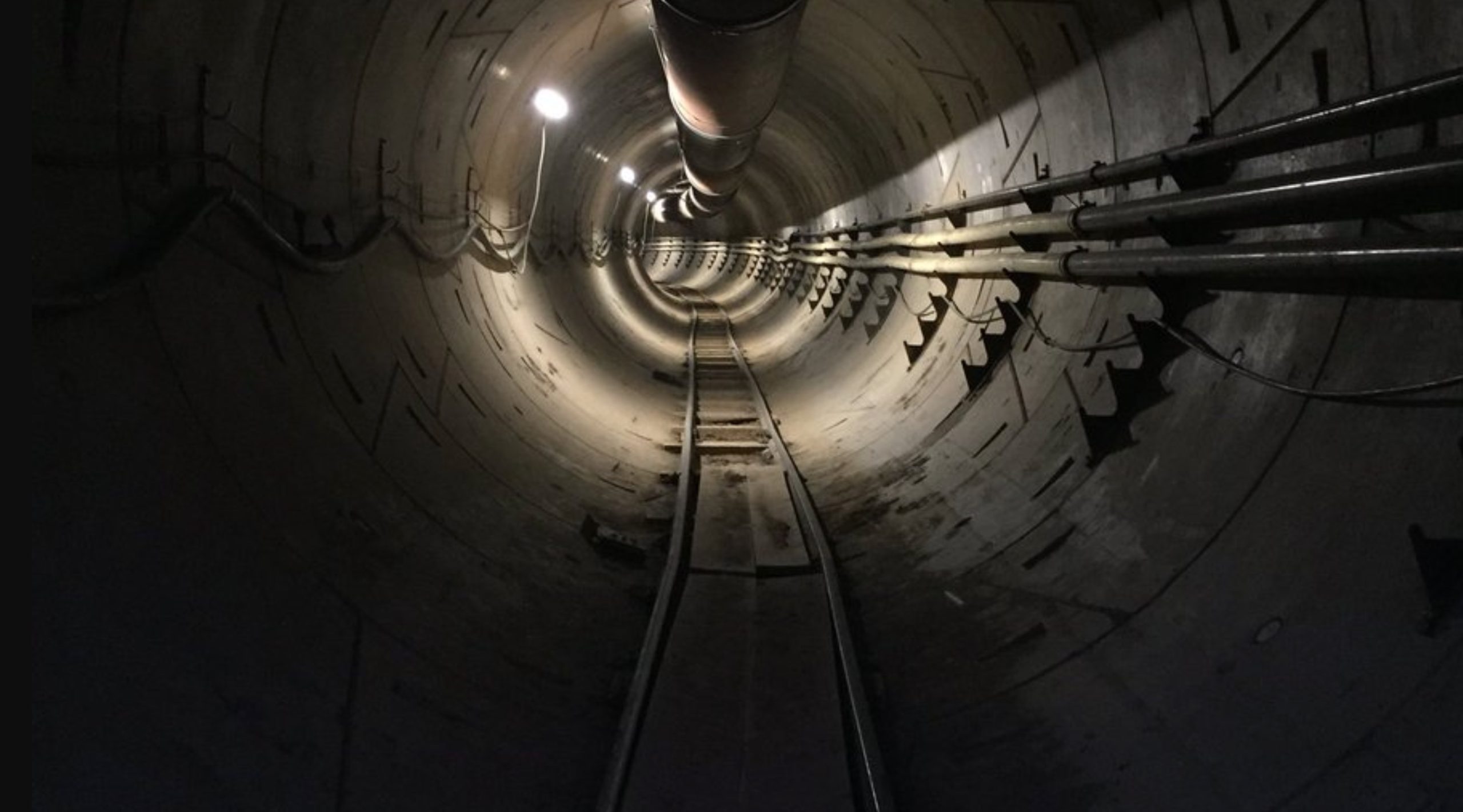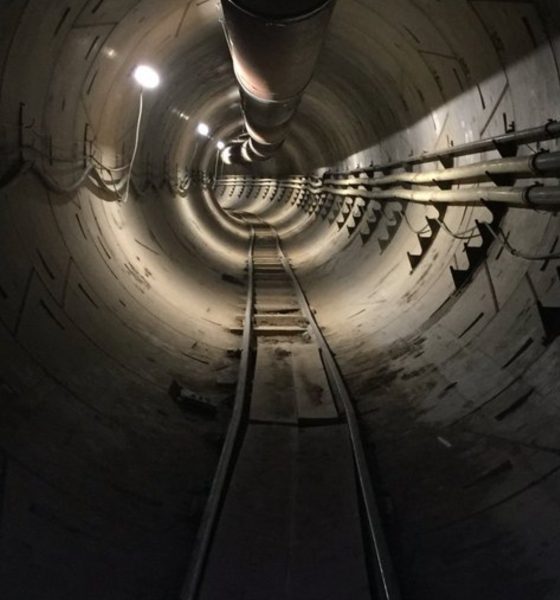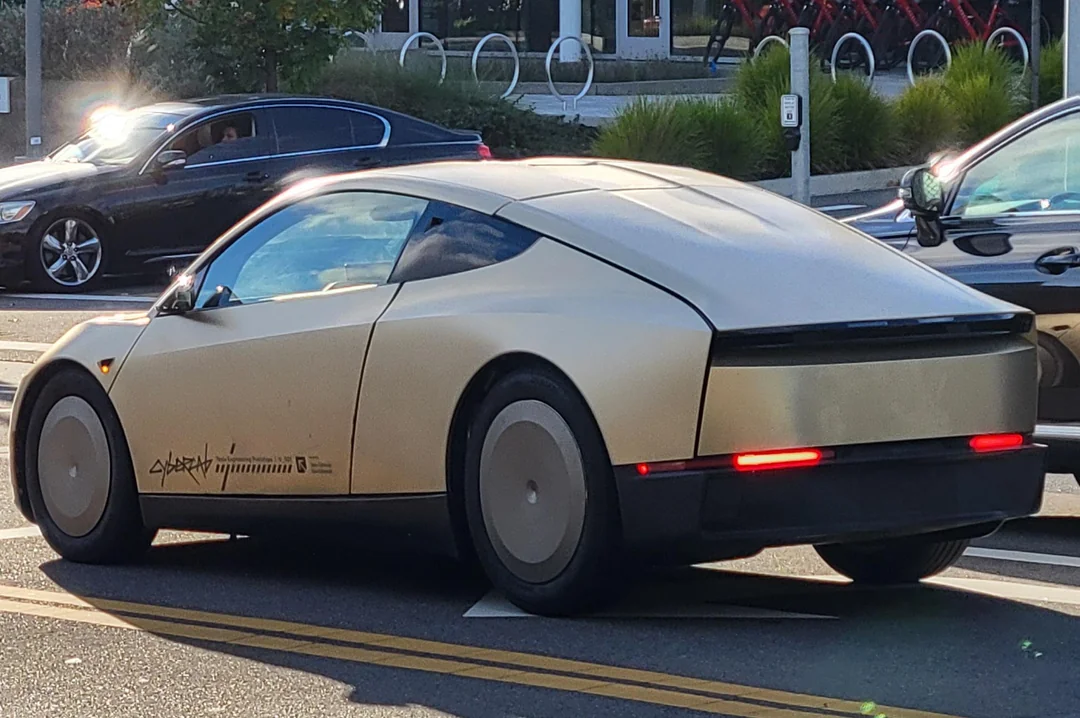

News
Musk says Boring Co. LA tunnel is nearly done, will offer free demo rides soon
The Boring Company’s proof-of-concept LA tunnel is almost done, according to recent social media updates from Elon Musk. In a series of announcements on Thursday, Musk provided a teaser video of the startup’s 2.7-mile proof-of-concept tunnel, as well as updates about the Boring Co.’s DC to New York and LA to San Francisco projects.
Musk’s Boring Company updates on Thursday started with an announcement that the company’s tunnel under Los Angeles is nearly complete. Musk uploaded a video of the tunnel on his Instagram page, where he stated that the project is just pending final regulatory approvals. The Tesla and SpaceX CEO also noted that The Boring Co. would be offering free demo rides to the public “in a few months.”
In his Instagram post, Musk personally extended his appreciation to everyone who aided in making the LA proof-of-concept tunnel a reality. Musk cited strong support from the public, as well as from government officials and regulators, as critical to the completion of the Boring Company’s projects.
In line with his statements back in March, Musk noted that once the tunnels are operational, The Boring Co. would be giving priority to commuters who do not have vehicles of their own, using an underground bus-like system called an Urban Loop. In his Instagram update, Musk stated that the cost of a ride in the Urban Loop would be less than that of a bus ticket.
Musk’s later tweets provided even more detail to the Boring Company’s projects. According to Musk, the company is already starting work on the DC to New York route — a far more ambitious plan that, if successful, would enable commuters to travel from New York to DC in just 29 minutes. Apart from this, Musk also noted that The Boring Co. is aiming to start working on a Los Angeles – San Francisco route next year. These projects will entail the use of pressurized pods in near vacuum tunnels using Hyperloop technology.
Already started DC to NY route.
Hopefully start LA to SF next year. That will be true @Hyperloop w pressurized pods in near vacuum tunnels & faster than jetliner.— Elon Musk (@elonmusk) May 11, 2018
One of the most notable tidbits of information that Musk dropped on Twitter, however, was the mention of “branch loops” in the Boring Company’s tunnels. One of his followers, Michael Baylor, called on Musk to build a stop near Vandenberg, in order to provide space fans an easy way to attend SpaceX’s launches. Responding to the Twitter user, Musk stated that such stops would indeed be possible.
“A cool thing about the design is that’s easy to incorporate branch loops to serve small to mid-size cities without slowing down the main loop at all,” Musk responded.
While only a year old, the Boring Company is starting to make strides in the transportation industry. Earlier this year, the tunneling startup outlasted two of its rival bidders in the proposed, high-profile downtown Chicago-O’Hare transport system. The Boring Company recently finished a funding round as well, with an SEC filing revealing that the tunneling startup has raised $113 million in equity.
Watch Elon Musk’s clip of The Boring Company’s LA tunnel in the video below.
https://www.instagram.com/p/BinoVT6Acpd/?taken-by=elonmusk

News
Tesla Model 3 named New Zealand’s best passenger car of 2025
Tesla flipped the switch on Full Self-Driving (Supervised) in September, turning every Model 3 and Model Y into New Zealand’s most advanced production car overnight.

The refreshed Tesla Model 3 has won the DRIVEN Car Guide AA Insurance NZ Car of the Year 2025 award in the Passenger Car category, beating all traditional and electric rivals.
Judges praised the all-electric sedan’s driving dynamics, value-packed EV tech, and the game-changing addition of Full Self-Driving (Supervised) that went live in New Zealand this September.
Why the Model 3 clinched the crown
DRIVEN admitted they were late to the “Highland” party because the updated sedan arrived in New Zealand as a 2024 model, just before the new Model Y stole the headlines. Yet two things forced a re-evaluation this year.
First, experiencing the new Model Y reminded testers how many big upgrades originated in the Model 3, such as the smoother ride, quieter cabin, ventilated seats, rear touchscreen, and stalk-less minimalist interior. Second, and far more importantly, Tesla flipped the switch on Full Self-Driving (Supervised) in September, turning every Model 3 and Model Y into New Zealand’s most advanced production car overnight.
FSD changes everything for Kiwi buyers
The publication called the entry-level rear-wheel-drive version “good to drive and represents a lot of EV technology for the money,” but highlighted that FSD elevates it into another league. “Make no mistake, despite the ‘Supervised’ bit in the name that requires you to remain ready to take control, it’s autonomous and very capable in some surprisingly tricky scenarios,” the review stated.
At NZ$11,400, FSD is far from cheap, but Tesla also offers FSD (Supervised) on a $159 monthly subscription, making the tech accessible without the full upfront investment. That’s a game-changer, as it allows users to access the company’s most advanced system without forking over a huge amount of money.
News
Tesla starts rolling out FSD V14.2.1 to AI4 vehicles including Cybertruck
FSD V14.2.1 was released just about a week after the initial FSD V14.2 update was rolled out.

It appears that the Tesla AI team burned the midnight oil, allowing them to release FSD V14.2.1 on Thanksgiving. The update has been reported by Tesla owners with AI4 vehicles, as well as Cybertruck owners.
For the Tesla AI team, at least, it appears that work really does not stop.
FSD V14.2.1
Initial posts about FSD V14.2.1 were shared by Tesla owners on social media platform X. As per the Tesla owners, V14.2.1 appears to be a point update that’s designed to polish the features and capacities that have been available in FSD V14. A look at the release notes for FSD V14.2.1, however, shows that an extra line has been added.
“Camera visibility can lead to increased attention monitoring sensitivity.”
Whether this could lead to more drivers being alerted to pay attention to the roads more remains to be seen. This would likely become evident as soon as the first batch of videos from Tesla owners who received V14.21 start sharing their first drive impressions of the update. Despite the update being released on Thanksgiving, it would not be surprising if first impressions videos of FSD V14.2.1 are shared today, just the same.
Rapid FSD releases
What is rather interesting and impressive is the fact that FSD V14.2.1 was released just about a week after the initial FSD V14.2 update was rolled out. This bodes well for Tesla’s FSD users, especially since CEO Elon Musk has stated in the past that the V14.2 series will be for “widespread use.”
FSD V14 has so far received numerous positive reviews from Tesla owners, with numerous drivers noting that the system now drives better than most human drivers because it is cautious, confident, and considerate at the same time. The only question now, really, is if the V14.2 series does make it to the company’s wide FSD fleet, which is still populated by numerous HW3 vehicles.
News
Waymo rider data hints that Tesla’s Cybercab strategy might be the smartest, after all
These observations all but validate Tesla’s controversial two-seat Cybercab strategy, which has caught a lot of criticism since it was unveiled last year.

Toyota Connected Europe designer Karim Dia Toubajie has highlighted a particular trend that became evident in Waymo’s Q3 2025 occupancy stats. As it turned out, 90% of the trips taken by the driverless taxis carried two or fewer passengers.
These observations all but validate Tesla’s controversial two-seat Cybercab strategy, which has caught a lot of criticism since it was unveiled last year.
Toyota designer observes a trend
Karim Dia Toubajie, Lead Product Designer (Sustainable Mobility) at Toyota Connected Europe, analyzed Waymo’s latest California Public Utilities Commission filings and posted the results on LinkedIn this week.
“90% of robotaxi trips have 2 or less passengers, so why are we using 5-seater vehicles?” Toubajie asked. He continued: “90% of trips have 2 or less people, 75% of trips have 1 or less people.” He accompanied his comments with a graphic showing Waymo’s occupancy rates, which showed 71% of trips having one passenger, 15% of trips having two passengers, 6% of trips having three passengers, 5% of trips having zero passengers, and only 3% of trips having four passengers.
The data excludes operational trips like depot runs or charging, though Toubajie pointed out that most of the time, Waymo’s massive self-driving taxis are really just transporting 1 or 2 people, at times even no passengers at all. “This means that most of the time, the vehicle being used significantly outweighs the needs of the trip,” the Toyota designer wrote in his post.
Cybercab suddenly looks perfectly sized
Toubajie gave a nod to Tesla’s approach. “The Tesla Cybercab announced in 2024, is a 2-seater robotaxi with a 50kWh battery but I still believe this is on the larger side of what’s required for most trips,” he wrote.
With Waymo’s own numbers now proving 90% of demand fits two seats or fewer, the wheel-less, lidar-free Cybercab now looks like the smartest play in the room. The Cybercab is designed to be easy to produce, with CEO Elon Musk commenting that its product line would resemble a consumer electronics factory more than an automotive plant. This means that the Cybercab could saturate the roads quickly once it is deployed.
While the Cybercab will likely take the lion’s share of Tesla’s ride-hailing passengers, the Model 3 sedan and Model Y crossover would be perfect for the remaining 9% of riders who require larger vehicles. This should be easy to implement for Tesla, as the Model Y and Model 3 are both mass-market vehicles.









